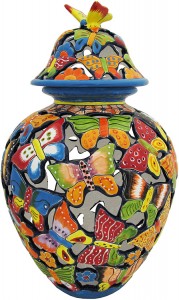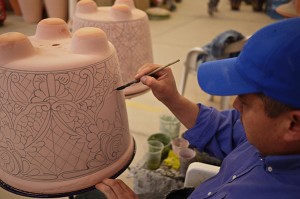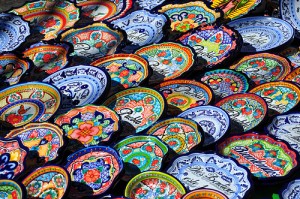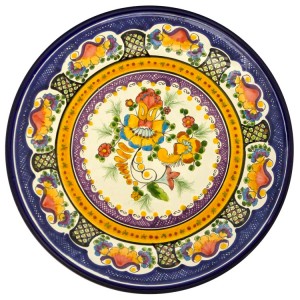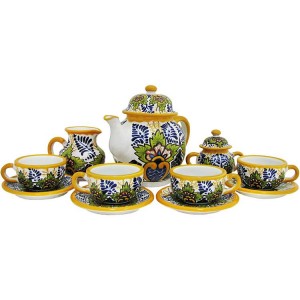 Travel across Mexico, and you’ll see all sorts of signs of Spanish influence that date back to the colonial era. Architecture, of course, is chief among them—those ornate churches and stately, airy casonas that still demand admiration– but there’s also Talavera, a type of pottery that was introduced to Mexico from Spain in the mid-17th-century. More than 300 years later, the popular style endures.
Travel across Mexico, and you’ll see all sorts of signs of Spanish influence that date back to the colonial era. Architecture, of course, is chief among them—those ornate churches and stately, airy casonas that still demand admiration– but there’s also Talavera, a type of pottery that was introduced to Mexico from Spain in the mid-17th-century. More than 300 years later, the popular style endures.
Age-old techniques have been passed down from generation to generation by master craftsmen. These techniques produce unique pieces that are truly works of art. Vibrant colors and delicate details are trademarks of Talavera pottery that give it the characteristic color and brilliance known only to Talavera ware. The detail is outstanding, and due to the kiln’s high firing temperature all our Talavera dishware is also crack and chip resistant.
Within Mexico, this style dates back to the 16th century colonial era when it was first introduced to Mexico by Spanish guild artisans. Thus today, Mexican Talavera reflects the diverse cultural heritage inherited from the Orient, the Italian Renaissance, the Moors, Spain and the indigenous people of Mexico.
Every jar and vase available at La Fuente Imports is handmade of clay in the classic Talavera style and then hand-painted by specialized artists outside of Dolores Hidalgo, Mexico.

